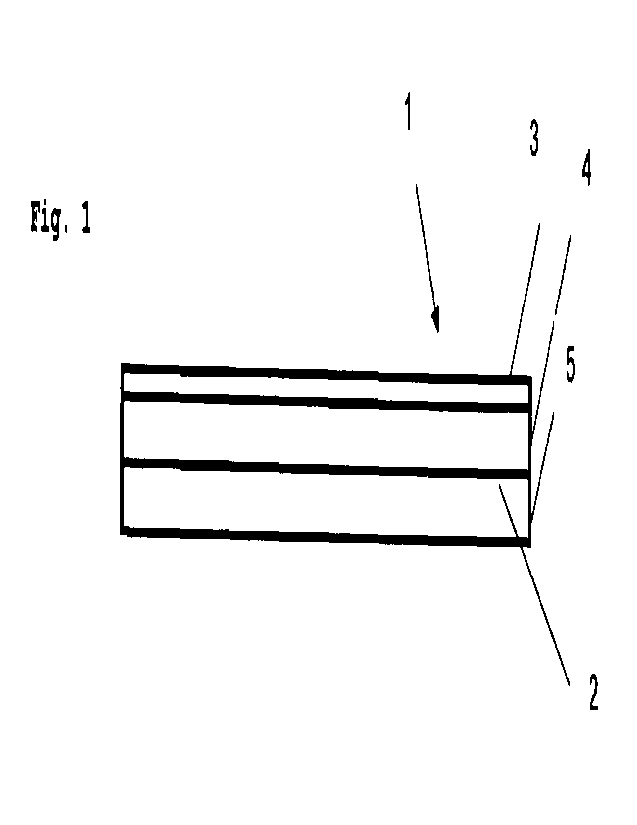Une partie des informations de ce site Web a été fournie par des sources externes. Le gouvernement du Canada n'assume aucune responsabilité concernant la précision, l'actualité ou la fiabilité des informations fournies par les sources externes. Les utilisateurs qui désirent employer cette information devraient consulter directement la source des informations. Le contenu fourni par les sources externes n'est pas assujetti aux exigences sur les langues officielles, la protection des renseignements personnels et l'accessibilité.
L'apparition de différences dans le texte et l'image des Revendications et de l'Abrégé dépend du moment auquel le document est publié. Les textes des Revendications et de l'Abrégé sont affichés :
| (12) Demande de brevet: | (11) CA 3203075 |
|---|---|
| (54) Titre français: | FILM DOTE D'UN REVETEMENT |
| (54) Titre anglais: | FILM WITH A COATING |
| Statut: | Demande conforme |
| (51) Classification internationale des brevets (CIB): |
|
|---|---|
| (72) Inventeurs : |
|
| (73) Titulaires : |
|
| (71) Demandeurs : |
|
| (74) Agent: | SMART & BIGGAR LP |
| (74) Co-agent: | |
| (45) Délivré: | |
| (86) Date de dépôt PCT: | 2020-12-10 |
| (87) Mise à la disponibilité du public: | 2021-07-01 |
| Licence disponible: | S.O. |
| Cédé au domaine public: | S.O. |
| (25) Langue des documents déposés: | Anglais |
| Traité de coopération en matière de brevets (PCT): | Oui |
|---|---|
| (86) Numéro de la demande PCT: | PCT/DE2020/000343 |
| (87) Numéro de publication internationale PCT: | DE2020000343 |
| (85) Entrée nationale: | 2023-06-21 |
| (30) Données de priorité de la demande: | ||||||
|---|---|---|---|---|---|---|
|
L'invention se rapporte à l'interaction de particules élémentaires, en particulier de neutrinos de n'importe quel type et/ou d'ondes électromagnétiques et/ou de gravitation, ci-après appelée énergie cinétique des rayonnements, tel qu'un spectre non visible de rayonnement solaire ou spatial avec des structures métalliques et/ou non métalliques, en particulier un film qui est constitué de métal, d'un alliage métallique ou d'une matière plastique électroconductrice et qui comporte un nano-revêtement non métallique.
The invention relates to the interaction of elementary particles, in particular neutrinos of any kind and/or electromagnetic waves and/or gravitation, hereinafter referred to as kinetic energy of radiations, such as non-visible spectrum of solar or space radiation with metallic and/or non-metallic structures, in particular a film which is made of metal, a metal alloy or an electrically conductive plastic and which has a non-metallic nano-coating.
Note : Les revendications sont présentées dans la langue officielle dans laquelle elles ont été soumises.
Note : Les descriptions sont présentées dans la langue officielle dans laquelle elles ont été soumises.

2024-08-01 : Dans le cadre de la transition vers les Brevets de nouvelle génération (BNG), la base de données sur les brevets canadiens (BDBC) contient désormais un Historique d'événement plus détaillé, qui reproduit le Journal des événements de notre nouvelle solution interne.
Veuillez noter que les événements débutant par « Inactive : » se réfèrent à des événements qui ne sont plus utilisés dans notre nouvelle solution interne.
Pour une meilleure compréhension de l'état de la demande ou brevet qui figure sur cette page, la rubrique Mise en garde , et les descriptions de Brevet , Historique d'événement , Taxes périodiques et Historique des paiements devraient être consultées.
| Description | Date |
|---|---|
| Inactive : CIB en 1re position | 2023-06-28 |
| Inactive : CIB attribuée | 2023-06-27 |
| Inactive : CIB attribuée | 2023-06-27 |
| Inactive : CIB attribuée | 2023-06-27 |
| Inactive : CIB attribuée | 2023-06-27 |
| Inactive : CIB attribuée | 2023-06-27 |
| Inactive : CIB attribuée | 2023-06-27 |
| Inactive : CIB attribuée | 2023-06-27 |
| Inactive : CIB attribuée | 2023-06-27 |
| Inactive : CIB attribuée | 2023-06-27 |
| Exigences quant à la conformité - jugées remplies | 2023-06-22 |
| Inactive : CIB attribuée | 2023-06-21 |
| Demande reçue - PCT | 2023-06-21 |
| Exigences pour l'entrée dans la phase nationale - jugée conforme | 2023-06-21 |
| Demande de priorité reçue | 2023-06-21 |
| Exigences applicables à la revendication de priorité - jugée conforme | 2023-06-21 |
| Lettre envoyée | 2023-06-21 |
| Inactive : CIB attribuée | 2023-06-21 |
| Inactive : CIB attribuée | 2023-06-21 |
| Inactive : CIB attribuée | 2023-06-21 |
| Inactive : CIB attribuée | 2023-06-21 |
| Inactive : CIB attribuée | 2023-06-21 |
| Demande publiée (accessible au public) | 2021-07-01 |
Il n'y a pas d'historique d'abandonnement
Le dernier paiement a été reçu le 2023-06-21
Avis : Si le paiement en totalité n'a pas été reçu au plus tard à la date indiquée, une taxe supplémentaire peut être imposée, soit une des taxes suivantes :
Les taxes sur les brevets sont ajustées au 1er janvier de chaque année. Les montants ci-dessus sont les montants actuels s'ils sont reçus au plus tard le 31 décembre de l'année en cours.
Veuillez vous référer à la page web des
taxes sur les brevets
de l'OPIC pour voir tous les montants actuels des taxes.
| Type de taxes | Anniversaire | Échéance | Date payée |
|---|---|---|---|
| Rétablissement (phase nationale) | 2023-06-21 | ||
| TM (demande, 3e anniv.) - générale | 03 | 2023-12-11 | 2023-06-21 |
| TM (demande, 2e anniv.) - générale | 02 | 2022-12-12 | 2023-06-21 |
| Taxe nationale de base - générale | 2023-06-21 |
Les titulaires actuels et antérieures au dossier sont affichés en ordre alphabétique.
| Titulaires actuels au dossier |
|---|
| NEUTRINO DEUTSCHLAND GMBH |
| Titulaires antérieures au dossier |
|---|
| HOLGER THORSTEN SCHUBART |